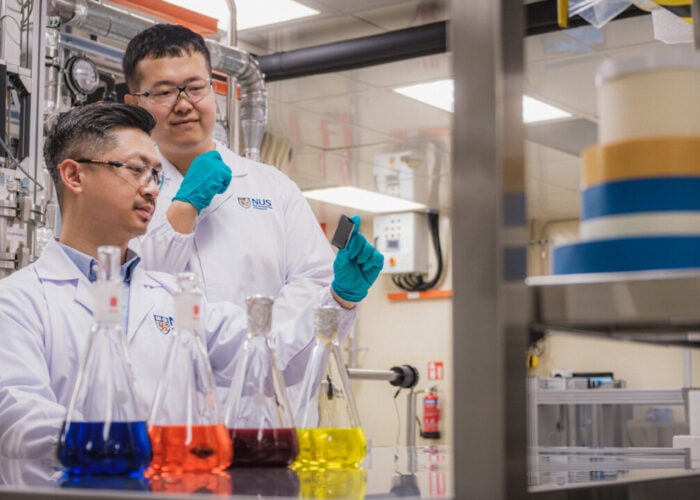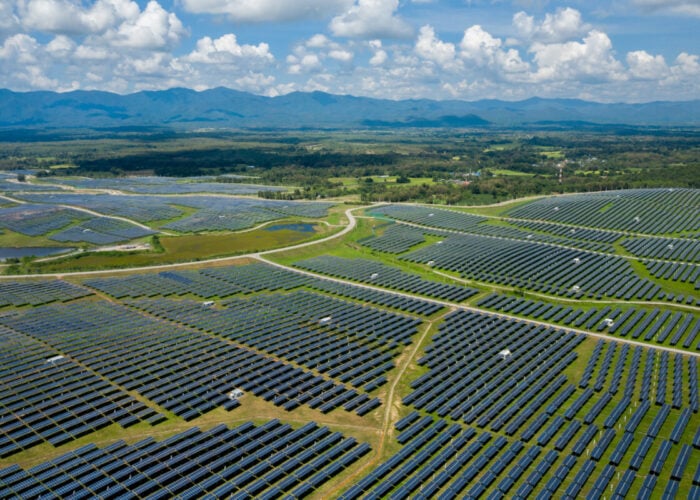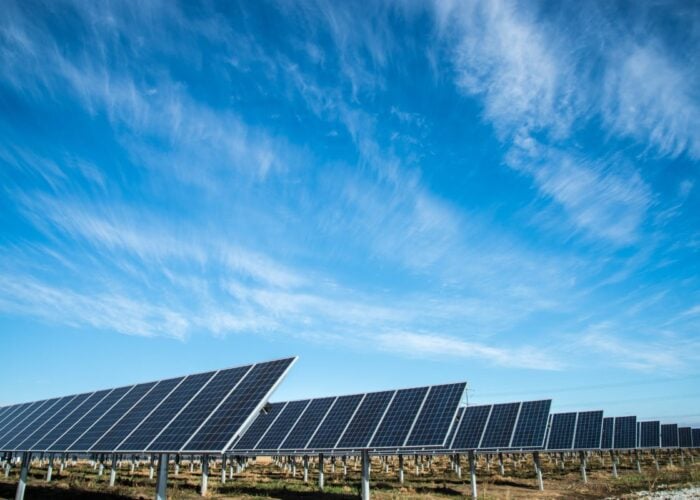
Some of the world’s largest PV manufacturers committing to perovskites is a key indicator that commercialisation of perovskite-based solar technology could be looming, the author of a new report has claimed.
Recent progress in manufacturing activity, equipment supply and several successful 100MW pilot lines all lay the groundwork for a significant ramp up, according to the ‘Rethink Energy: Global Perovskites Forecast’ report from analyst firm Rethink Technology Research.
Unlock unlimited access for 12 whole months of distinctive global analysis
Photovoltaics International is now included.
- Regular insight and analysis of the industry’s biggest developments
- In-depth interviews with the industry’s leading figures
- Unlimited digital access to the PV Tech Power journal catalogue
- Unlimited digital access to the Photovoltaics International journal catalogue
- Access to more than 1,000 technical papers
- Discounts on Solar Media’s portfolio of events, in-person and virtual
While the report did not focus on the historical spanner in the works of perovskite commercialisation – that of degradation in real-world conditions – the report expects two decades of “unrelenting growth” in the sector from 2026 onwards.
Unlike previous false dawns
Andries Wantenaar, solar analyst at Rethink Energy and report author, tells PV Tech Premium: “The main thing that changed my mind was three Chinese companies, UtmoLight, Microquanta, and GCL System Integration claiming to have actually built pilot lines, even though I’m sure they’re just making test batches, they do have a nominal production capacity of 100MW.”
Finlay Colville, head of market intelligence at Solar Media, agreed with the report’s message that key players entering the space and the coming online of several 100MW pilot lines shows growing interest in perovskite.
However, he noted that these lines are being set up to see if the technology works and, alongside this, both reliability and data remain “key for any investor to take this technology seriously”.
“Right now, there’s still an awful lot of field data that’s required before a solar farm investor would be interested,” adds Colville. “There’s still key question marks on reliability performance levels over time, scalability and mass production on large-scale substrates.”
Over the years, there has been much hype and plenty of false dawns for the perovskite industry. Earlier in the year, Wantenaar was still seeing little change, except for small incremental progress and the usual occurrences of start-ups setting up pilots and making various claims.
Wantenaar decided that if anything was going to signal genuine change, it would be when the existing solar manufacturers got involved. Thus, after a number of recent announcements, Wantenaar is confident in providing a significant list of examples of big names moving into the perovskite space.
Major US manufacturer First Solar, for example, acquired and established a perovskite subsidiary in May by offering US$38 million for Swedish perovskite specialist Evolar, with another US$42m in investment contingent on reaching research goals. The company thus brought a 30-strong research team into its fold.
Meanwhile, GCL System Integration has started to operate in the perovskite space through two subsidiaries, while in August, Chinese firm Jiejia Weichuang made a US$100 million investment in production line equipment from an equipment supplier for a perovskite and perovskite stacked equipment industrialisation project in Changzhou City, Jiangsu Province.
“This is the kind of thing that didn’t feature in the previous false dawns,” adds Wantenaar.
Elsewhere, South Korean manufacturer Qcells has invested US$100 million in a pilot line for tandems in May and Italian module maker Futurasun acquired perovskite start-up Solartix in June.
Improving efficiency
Meanwhile, another Chinese giant, LONGi, has been posting world record results for heterojunction-perovskite tandem cells, although it has yet to invest in a pilot line. Wantenaar notes that obtaining high efficiency results on one square centimetre is one thing but the primary challenge is scaling it up and producing it in a manner suitable to industry.
The second issue is proving that it won’t degrade in ten, 20 or even 30 years. Nonetheless, a company of the size of LONGi showing interest in perovskites should not be overlooked.
According to the US’ National Renewable Energy Laboratory (NREL), tandem-junction cell architectures could offer higher module efficiencies over single-junction designs because of the ability to split the solar spectrum into multiple bands that can be more efficiently converted by separate devices.
For the industry to move beyond single junction, it needs to have a tandem structure, so perovskite is a possible candidate for this anticipated move, said Colville.
While he is hesitant to make precise forecasts due to the myriad of uncertainties involved, he adds: “The fact that so many companies are actively researching and looking at setting up pilot lines may be an indication that potential volume manufacturing could happen before the end of the decade.”
This year, investment into perovskites will come to at least a billion dollars, said Wantenaar’s report, demonstrating this increased interest in the sector across the solar industry.
In response, Colville says: “I’m aligned with the fact that this shows all this growing interest from a bunch of players for perovskite being a potential candidate as the industry moves beyond single junction.”
Trends in technology and degredation
What is also encouraging for the perovskite sector is that while Wantenaar found only 20 perovskite companies to analyse in 2021, he was able to cover 42 firms in the latest report. While this list is not exhaustive, half of these companies are based in China, which has allowed him to draw more nuanced conclusions from the data.
“In China and East Asia, you have a heavy favourability towards thin-film among the start-ups,” Wantenaar says. “In the West, it’s more evenly split between thin-film and tandem.
“Also, there’s a split where thin-film tends to be pursued more by the start-ups and tandem tends to be pursued more by the big companies, for [the] obvious reasons that the big companies already have the non-perovskite half of it,” continues Wantenaar.
“Whereas the start-ups don’t want to try and compete directly with silicon manufacturing – a hundred billion dollar-a-year industry – so they want to do something different, which is single junction perovskite thin film in the building integrated photovoltaics sector.”
There is also a lot of variation within tandems, with Oxford PV using two terminals, but several four-terminal tandems being worked on by the likes of TandemPV and Caelux in the US as well as a Singaporean company that has yet to announce this work publicly. There is even research into a perovskite on perovskites tandem in China.
Adding caution to the forecasts, Wantenaar notes that the historic degradation issue remains for perovskite solar technology. Although perovskite pioneers claim that the stress tests designed for silicon do not necessarily translate into actual real-world performance for perovskites, he believes most perovskite products do have more than ten years of lifespan at least.
“Maybe they even have 25 years in some cases, but they don’t know it and they can’t prove it. It’s still a rocky road to commercialisation,” says Wantenaar. “I don’t really expect there ever to be a sudden category shift. I think it’s a gradual change.”
“It seems like every month there’s a new start-up or there’s a new pilot line announcement, so it’s all coming together, at least starting,” says Wantenaar.







